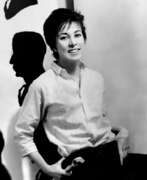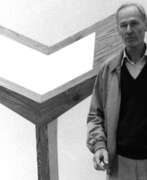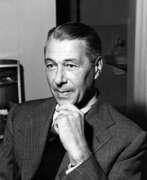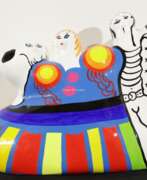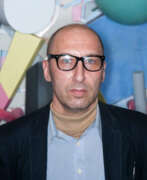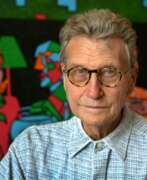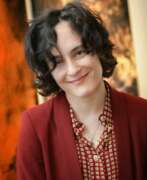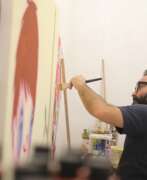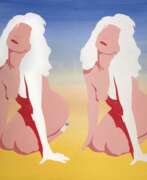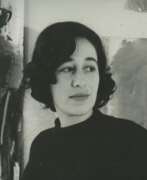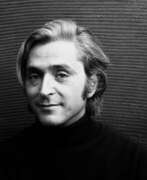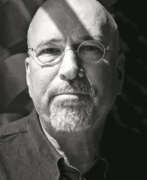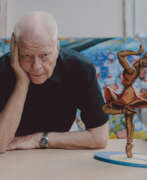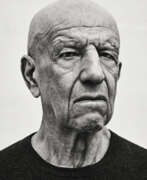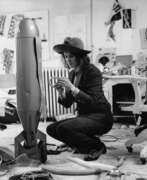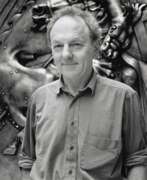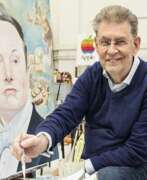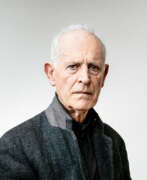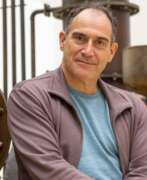Sculptors Pop Art
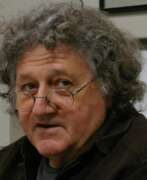

Bruno Bruni senior is an Italian lithographer, graphic artist, painter and sculptor. He became commercially successful in the 1970s. In 1977, he won the International Senefeld award for Lithography. He has since become one of the most successful Italian artists in Germany and one of Germany's best known lithographers.


Niclas Castello, real name Norbert Zerbs, is a German painter and sculptor, representative of Pop Art.
Niclas studied art in Germany, Paris and New York. In the 1990s in West Berlin he discovered street art, which became the basis of his career. He is known for a series of sculptures titled "Kiss Sculptures" and the works "Cube Painting-Sculpture". Castello also uses an unusual technique to capture the moment the work emerges: at the end of the realization, the artist takes the piece and compresses it to place it in a box.


Jaqueline de Jong is a Dutch painter, sculptor and graphic artist living and working in Amsterdam and Bourbon, France.
In her painting practice, she easily switched between different styles, from expressionist painting to new figuration and pop art, repeating motifs of eroticism, desire, violence and humor. From prints to large oil paintings, she displays a fascination with the grotesque and the macabre, especially in the more figurative works depicting creatures that are half human, half beast. It is as if they reveal the ugly or animal side of human nature that we usually prefer to hide.
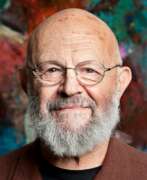

Jim Dine is an American artist whose œuvre extends over sixty years. Dine’s work includes painting, drawing, printmaking (in many forms including lithographs, etchings, gravure, intaglio, woodcuts, letterpress and linocuts), sculpture and photography; his early works encompassed assemblage and happenings, while in recent years his poetry output, both in publications and readings, has increased.
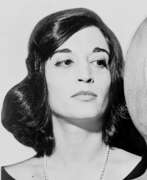

Marisol Escobar, otherwise known simply as Marisol, was a Venezuelan-American sculptor born in Paris, who lived and worked in New York City. She became world-famous in the mid-1960s, but lapsed into relative obscurity within a decade. She continued to create her artworks and returned to the limelight in the early 21st century, capped by a 2014 major retrospective show organized by the Memphis Brooks Museum of Art.
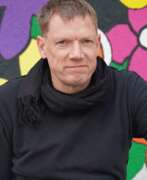

Michael Fischer-Art, an artist born in Leipzig, takes a socially critical approach to the environment in his art and assigns his work to “market realism”. His pictures are colorful attacks on intellectualism and profundity, while his sculptures are eye-catching eye-catchers that beautify many places in Germany. He also creates pop art-style portraits of celebrities and maintains contacts with representatives from politics, business and show business.
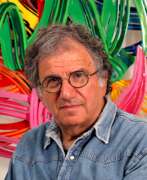

David (Dudu) Gerstein is an Israeli painter, sculptor, draftsman and printmaker.
Gerstein received a broad education: he studied at the Bezalel Academy, then at the École des Beaux-Arts in Paris, in New York he continued his studies at the Art Students League, and in 1974 he received a diploma from St. Martin's School of Art in London. He works freely in all media: printmaking, painting, sculpture, drawing, murals and monumental creations.
In the 1970's Gerstein began experimenting with three-dimensional works, leaving cut-out fragments hanging in space. After many innovations, David began creating wall sculptures made with laser cutting and automotive paint. He created his own kind of pop art and gained an international reputation for his signature style with colorful images of numerous cyclists, butterflies, dancers, runners and more. With the advent of computers, he was able to convert his drawings into perfectly formatted patterns that can be faithfully reproduced in a metalworking shop.
And Gerstein's recognizable monumental sculptures can be seen in cities around the world. His street sculpture Momentum is Singapore's tallest public sculpture.
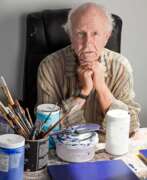

Joe Goode is an American artist associated with the Pop Art and Light and Space movements. Goode's work often incorporates images of the American West, such as clouds, mountains, and sunsets, as well as everyday objects like milk bottles and newspapers.
Goode studied at the Chouinard Art Institute in Los Angeles. He began his career as a painter in the 1950s and 1960s, creating works that combined abstraction and figuration. In the 1960s, he became associated with the Pop Art movement and began incorporating images of everyday objects and popular culture into his work.
In the 1970s, Goode began exploring the potential of light and color as mediums, creating installations and sculptures that played with the ways in which light interacts with different materials and surfaces. He was also associated with the Light and Space movement, which sought to create immersive, sensory experiences through the use of light and space.
Goode has exhibited his work extensively in the United States and Europe, and his work is represented in numerous public and private collections. He has also taught at several art schools, including the University of California, Los Angeles.
Goode continues to work and exhibit his art today, and his innovative approach to painting, sculpture, and installation has made him one of the most important artists of the Pop Art and Light and Space movements.
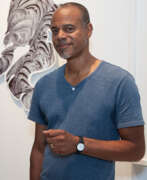

Todd Gray works in photography, performance and sculpture as a contemporary artist who lives and works in Los Angeles, California and Akwidaa, Ghana.
Writing in the catalogue for the exhibition Black is, Black Ain't at the Renaissance Society, Chicago, Amy M. Mooney writes "critics have noted that Gray's work is "fluent in cultural iconography, driven by introspection, and steeped in issues of corporate politics and racial identity" and that his self-portraits thwart a traditional read of the exterior likeness". Gray describes himself as an artist and activist who primarily focuses on issues of race, class, gender, and colonialism, and uses these lenses to challenge binaries in the past and present. In general, his work aims to challenge the viewer both by what he is including and what he is leaving out.
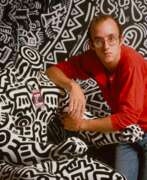

Keith Allen Haring was an iconic American artist, recognized globally for his distinctive contributions to painting, sculpture, and art culture. Haring's work is celebrated for its vibrant, dynamic imagery and its profound social activism, which addressed critical themes such as AIDS awareness, racial inequality, and the empowerment of communities through art. His art transcends conventional galleries, marking its presence in public spaces, museums, and collections worldwide, thereby democratizing art access and engagement.
Haring's unique approach to art was characterized by bold lines, vivid colors, and animated figures, which not only attracted art collectors and experts but also resonated with a broader audience. His ability to blend art with activism, using public spaces as his canvas, was revolutionary. Works like the "Crack is Wack" mural and the untitled piece on the Berlin Wall stand testament to his commitment to societal issues, making him a pioneer in using art as a tool for social change.
Keith Haring's legacy continues through the Keith Haring Foundation, established by the artist in 1989 to support children's programs and organizations dedicated to raising AIDS awareness. The Foundation ensures that Haring's artistic and philanthropic vision persists, facilitating exhibitions and educational initiatives. For collectors and art experts keen on exploring Haring's influential body of work and its impact on contemporary art and culture, his creations offer profound insights into the intersection of art, social activism, and community engagement.
For those interested in staying informed about new product sales, auction events, and exhibitions related to Keith Allen Haring, signing up for updates is a straightforward way to remain connected with the ongoing celebration of his art and humanitarian legacy. This subscription ensures direct access to the latest on Haring's impactful contributions to the world of art and culture.
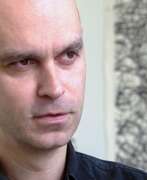

Arturo Herrera is a Venezuelan-born American and German painter, graphic artist and sculptor who has lived and worked in Berlin since 2003.
Herrera came to the United States in 1978, studied art at the University of Tulsa, traveled in Europe, and attended graduate school at the University of Illinois at Chicago. In New York, he began collecting coloring books, comic books, and illustrated fairy tales. In the early 1990s, he became known for his extensive works in various collage techniques. Herrera seems to weave fragments of found recognizable images into collages.
Herrera's oeuvre includes works on paper, paintings, reliefs, sculptures, public art and books. In the late 1990s, the artist began creating wall sculptures out of felt: cut pieces of material are suspended, creating colorful "blobs". The resulting images often balance between abstraction and figuration, with echoes of 1950s-1960s Pop Art and early 20th century Surrealism, Art Nouveau, lyrical abstraction and Cubist collage.
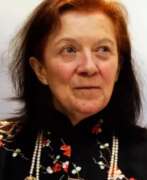

Ana Mercedes Hoyos was a Colombian painter, sculptor and a pioneer in modern art in the country. In her half-century of artistic works, she garnered over seventeen awards of national and international recognition. Beginning her career in a Pop Art style which moved towards abstract, her trajectory moved toward cubism and realism as she explored light, color, sensuality and the bounty of her surroundings. Her reinterpretations of master painters led her to an exploration of Colombian multiculturalism, and her later works focused on Afro-Colombian and mestizo heritage within the Colombian landscape.


Robert Indiana (born Robert Clark) was an American artist associated with the pop art movement.
His iconic image LOVE was first created in 1964 in the form of a card which he sent to several friends and acquaintances in the art world. In 1965, Robert Indiana was invited to propose an artwork to be featured on the Museum of Modern Art's annual Christmas card. Indiana submitted several 12” square oil on canvas variations based on his LOVE image. The museum selected the most intense color combination in red, blue, and green. It became one of the most popular cards the museum has ever offered. Indiana continued to develop his LOVE series, and in 1966, worked with Marian Goodman of Multiples, Inc. to make his first LOVE sculpture in aluminum. In 1970, Indiana completed his first monumental LOVE sculpture in Cor-Ten steel which is in the collection of the Indianapolis Museum of Art.
In addition to being a painter and sculptor, Indiana made posters and prints and also designed stage sets and costumes for the Virgil Thompson and Gertrude Stein opera The Mother of Us All. Indiana's artwork has been featured in numerous exhibitions around the world and is included in the permanent collections of many major museums including the Museum of Modern Art, New York; Tate Modern, London; and the San Francisco Museum of Modern Art.
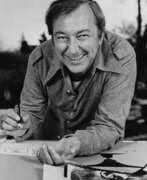

Jasper Johns, an American artist, has been a pivotal figure in the art world, celebrated for his innovative contributions to painting, sculpture, and printmaking. Johns, born in 1930, has challenged and expanded the boundaries of contemporary art with his unique approach to visual expression, blending elements of Abstract Expressionism, Neo-Dada, and Pop Art. He is perhaps best known for his iconic depictions of everyday objects and symbols, such as flags, maps, numbers, and targets, which he transforms into complex, layered works that invite contemplation on themes of identity, perception, and memory.
Johns' art is distinguished by its masterful use of texture, symbolism, and an exploration of the materiality of the medium. His technique of incorporating textural elements and found objects into his canvases blurs the lines between painting and sculpture, challenging traditional distinctions in art. For instance, his piece "Flag" (1954-55) reimagines the American flag with a surface rich in encaustic paint and newspaper clippings, creating a work that is both a familiar symbol and a deeply personal expression. Similarly, "Painted Bronze" (Ale Cans) (1960) playfully interrogates the nature of representation and the art object by presenting a lifelike bronze sculpture of beer cans, furthering the dialogue on art's relationship with the everyday.
Johns' work is held in high esteem and can be found in major museums and galleries worldwide, including the Museum of Modern Art in New York and the Tate Modern in London. His influence extends beyond his own oeuvre, impacting the development of several art movements, including Pop Art and Conceptual Art. Johns' exploration of language and semiotics, particularly in works like "According to What" (1964), prefigured the Conceptual Art movement's interest in the role of language and ideas in art.
For collectors and experts in art and antiques, Jasper Johns' work represents a critical junction in the evolution of post-war American art, offering rich insights into the interplay between cultural symbols and artistic innovation. His enduring relevance and the intellectual depth of his work continue to inspire and challenge audiences, making him a central figure in discussions of contemporary art.
To stay informed about new sales, auction events, and updates related to Jasper Johns, we invite you to sign up for our newsletter. This subscription is an excellent resource for enthusiasts and collectors eager to engage with the dynamic market for Jasper Johns' works and related artistic developments.


Allen Jones is a British pop artist and a senior member of the Royal Academy of Arts. He is known for his paintings, sculptures and lithographs on the theme of human sexuality. He was awarded the Prix des Jeunes Artistes at the 1963 Paris Biennale.
Allen Jones' most famous work is "Hat Stand, Table and Chair," created from "fetish" fiberglass mannequins.
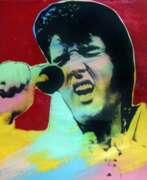



Jeffrey Lynn Koons is an American artist recognized for his work dealing with popular culture and his sculptures depicting everyday objects, including balloon animals produced in stainless steel with mirror-finish surfaces. He lives and works in both New York City and his hometown of York, Pennsylvania. His works have sold for substantial sums, including at least two record auction prices for a work by a living artist: US$58.4 million for Balloon Dog (Orange) in 2013 and US$91.1 million for Rabbit in 2019.
Critics are sharply divided in their views of Koons. Some view his work as pioneering and of major art-historical importance. Others dismiss his work as kitsch, crass, and based on cynical self-merchandising. Koons has stated that there are no hidden meanings and critiques in his works.
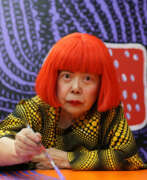

Yayoi Kusama is a Japanese contemporary artist who works primarily in sculpture and installation, but is also active in painting, performance, video art, fashion, poetry, fiction, and other arts. Her work is based in conceptual art and shows some attributes of feminism, minimalism, surrealism, Art Brut, pop art, and abstract expressionism, and is infused with autobiographical, psychological, and sexual content. She has been acknowledged as one of the most important living artists to come out of Japan.
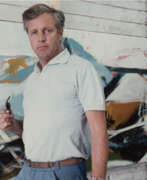

George Peter Lanyon was a British painter of landscapes leaning heavily towards abstraction. Lanyon was one of the most important artists to emerge in post-war Britain. Despite his early death at the age of forty-six he achieved a body of work that is amongst the most original and important reappraisals of modernism in painting to be found anywhere. Combining abstract values with radical ideas about landscape and the figure, Lanyon navigated a course from Constructivism through Abstract Expressionism to a style close to Pop. He also made constructions, pottery and collage.
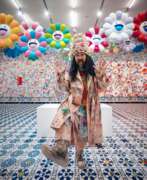

Takashi Murakami is a Japanese contemporary artist. He works in fine arts media (such as painting and sculpture) as well as commercial (such as fashion, merchandise, and animation) and is known for blurring the line between high and low arts as well as co aesthetic characteristics of the Japanese artistic tradition and the nature of postwar Japanese culture and society, and is also used for Murakami's artistic style and other Japanese artists he has influenced.


Patrick Nagel was an American artist and illustrator. He created popular illustrations on board, paper, and canvas, most of which emphasize the female form in a distinctive style, descended from Art Deco and Pop art. He is best known for his illustrations for Playboy magazine and the pop music group Duran Duran, for whom he designed the cover of the best-selling album Rio, which has been acclaimed as one of the greatest album covers of all time.
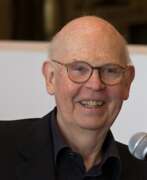

Claes Oldenburg was a Swedish-born American sculptor, celebrated for his groundbreaking contributions to the field of public art and sculpture. With a career spanning over several decades, Oldenburg redefined the boundaries between sculpture and everyday objects, bringing a whimsical yet profound commentary on consumer culture and the urban environment. His talent for transforming the mundane into the monumental made his work not only iconic but also a vital part of the conversation about the role of art in public spaces.
Oldenburg's sculptures are characterized by their colossal scale and imaginative designs, often inspired by everyday items. Perhaps his most famous works include "Clothespin" in Philadelphia and "Spoonbridge and Cherry" in Minneapolis. These pieces are emblematic of his unique approach to sculpture, where familiar objects are reimagined in unexpected contexts, challenging viewers to see the world around them in new ways. His ability to blur the lines between art and life, combined with his playful exploration of form and material, has left an indelible mark on the art world.
For collectors and experts in art and antiques, Oldenburg's works represent not just significant artistic achievements but also compelling investments. His sculptures and installations continue to be celebrated in museums and galleries worldwide, testament to his enduring influence and relevance in the contemporary art scene. For those interested in the intersection of culture, art, and urban life, Oldenburg's legacy offers rich insights and inspiration.
To stay informed about new product sales and auction events related to Claes Oldenburg, we invite you to sign up for updates. This subscription service is designed for collectors and art enthusiasts eager to keep abreast of the latest developments and opportunities in the world of art and antiques. Join us in exploring the remarkable contributions of Claes Oldenburg to the art world.


Eduardo Paolozzi was a Scottish artist renowned for his pioneering contributions to the Pop Art movement. His work, characterized by an amalgamation of popular culture references and technological imagery, played a significant role in shaping the visual arts landscape of the 20th century. Eduardo Paolozzi's graphic works, particularly from the 1960s, broke new ground in the silkscreen medium, with notable series such as "As Is When" and "Moonstrips Empire News" showcasing his innovative approach to art that combines elements of science, technology, and pop culture.
After a transformative period in Paris, where he interacted with key figures of the Surrealist movement, Eduardo Paolozzi returned to the UK, where he became a central figure in the formation of the Independent Group. This collective was instrumental in the development of British Pop Art, with Paolozzi's early collages, especially "I Was a Rich Man's Plaything," marking a seminal moment in the genre's emergence.
His artistic ventures were not confined to printmaking and collage; Eduardo Paolozzi's sculptures and mosaic murals, such as those for Tottenham Court Road tube station in London, also garnered acclaim for their intricate detail and thematic complexity. The artist's influence extended into his academic roles, where he nurtured future generations of artists.
Eduardo Paolozzi's legacy is preserved through extensive collections and exhibitions, such as at the National Galleries of Scotland, which holds a significant number of his works. This includes a recreation of his studio, providing insight into his creative process and the diverse influences that shaped his art.
For enthusiasts and collectors keen on delving deeper into Eduardo Paolozzi's world, signing up for updates can offer exclusive access to sales and auction events related to his works. This ensures that aficionados stay informed about opportunities to engage with the art and legacy of this influential figure.
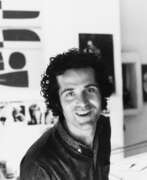

Pino Pascali is an Italian sculptor, conceptual artist, graphic designer and stage designer, one of the forerunners of the art povera style.
He studied scenography at the Academy of Art in Rome, then worked in television as a designer and cameraman, and at the same time experimented with different materials.
Pascali began to create colorful works influenced by pop art in different styles and media. He used old cans, plastic brushes, fake fur, colored water, hay, mud... One of Pascali's most impressive works is Bridge (1968), an eight-meter bridge made of steel sponges.


Richard Pettibone is an American painter, sculptor, graphic artist and illustrator. He created replicas of the works of pop art artists such as Andy Warhol, Roy Lichtenstein and Ed Rusch. Reproduced works by leading avant-garde artists Marcel Duchamp and Constantin Brancusi.


Peter Phillips is an English artist. His work ranges from conventional oils on canvas to multi-media compositions and collages to sculptures and architecture.
As an originator of Pop art, Phillips trained at the Royal College of Art with his contemporaries David Hockney, Allen Jones, R.B. Kitaj and others figures in British Pop Art. When he was awarded a Harkness Fellowship he moved to New York, where he exhibited alongside American counterparts Andy Warhol, Roy Lichtenstein and James Rosenquist. Phillips later returned to Europe, where he now resides and continues to paint and exhibit.
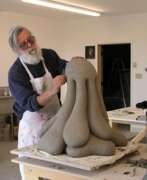

Kenneth Price was an American artist who predominantly created ceramic sculpture.
He is best known for his abstract shapes constructed from fired clay. Typically, they are not glazed, but intricately painted with multiple layers of bright acrylic paint and then sanded down to reveal the colors beneath.
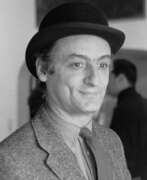

Larry Rivers (born Yitzroch Loiza Grossberg) was an American artist, musician, filmmaker, and occasional actor. Considered by many scholars to be the "Godfather" and "Grandfather" of Pop art, he was one of the first artists to merge non-objective, non-narrative art with narrative and objective abstraction.
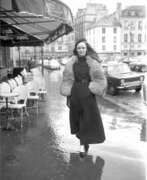

Niki de Saint Phalle was a French-American sculptor, painter, filmmaker, and author of colorful hand-illustrated books. Widely noted as one of the few female monumental sculptors, Saint Phalle was also known for her social commitment and work.
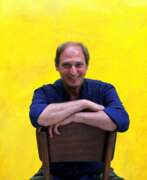

Maurizio Savini is an Italian artist and sculptor specializing in the use of chewing gum as a material for his artworks, living and working in Rome.
His sculptures are whimsical and surreal at the same time, underpinned by social and political aspects that refer to a broader reflection on the ecological consequences caused by human actions. For his work, Savini uses pre-packaged finished product from factories.


Donald K. Sultan is an American painter, sculptor, and printmaker, particularly well-known for large-scale still life paintings and the use of industrial materials such as tar, enamel, spackle and vinyl tiles. He has been exhibiting internationally in prominent museums and galleries, and his works are included in important museum collections all over the globe. Sultan is the recipient of numerous honors and awards for his artistic achievements.
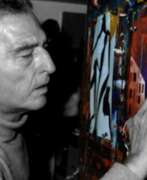

Emilio Tadini is an Italian artist, writer and poet, playwright, translator and journalist.
After graduating from the Faculty of Literature at the Catholic University of the Sacred Heart in Milan, Tadini published essays, novels, poems. At the same time, he also dabbles in painting. Tadini was also president of the Brera Academy of Fine Arts from 1997 to 2000.


Ernest Tino Trova was a self-trained American surrealist and pop art painter and sculptor. Best known for his signature image and figure series, The Falling Man, Trova considered his entire output a single "work in progress." Trova used classic American comic character toys in some of his pieces because he admired their surrealism. Many of Trova's sculptures are cast in unusual white bronze. He began as a painter, progressing through three-dimensional constructions to his mature medium, sculpture. Trova's gift of forty of his works led to the opening of St. Louis County, Missouri's Laumeier Sculpture Park.


Henri van Herwegen, better known by his pseudonym Panamarenko, is a Belgian artist known for his installations and objects that combined elements of science, technology, art and fantasy.
Panamarenko was an autodidact and began his career as an artist in the 1960s. His work has been shown in many exhibitions in Europe, America and Asia. He created various objects such as flying machines, submarines, wings, bicycles and more.
Panamarenko's work has used different materials including metal, plastic, textiles, glass and wood. His installations and objects were often interactive and could move or glow.
Panamarenko was one of the most influential artists in Belgium and his work is in the collections of many museums, including the Museum of Modern Art in Barcelona, the Guggenheim Museum in Bilbao and the Museum of Modern Art in Amsterdam.
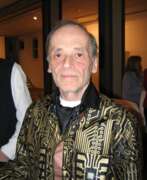

Petrus Wandrey (German: Petrus Wandrey, full name Ulrich Carl Peter Wandrey) is a German digital artist.
In his youth he was influenced by Surrealism, the Pop Art movement and Dadaism. But later Wandrey became so impressed by the culture of science, technology and digital images that he became one of the pioneers of the digitalization movement. In his work, Wandrey often uses digital combinations, pixel sequences and even computer trash.
